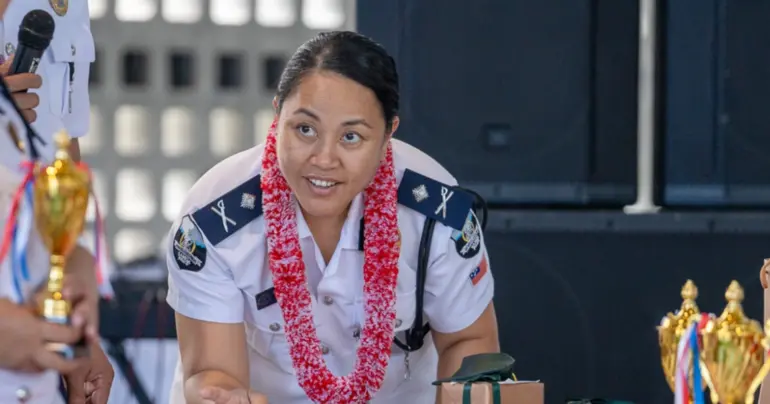Protecting our coral reefs
A radio campaign that aims to protect Samoa’s coral reefs by promoting the establishment of no-take zones was launched last Friday.
The project was launched by Conservation International, in partnership with the Ministry of Natural Resources and Environment and the Ministry of Agriculture and Fisheries.
Three different skits can be heard on Radio Polynesia for the next three months – with a mother and her son as well as two confused fishermen explaining to listeners what a no-take zone is and why it is important to the health of Samoa’s reefs.
A no-take zone is an area set aside by the village or government where no extractive activity is allowed, which means no fishing and no taking of shellfish, sea cucumbers, corals or sand and rocks. No-take zones are also known as fish reserves or marine management areas.
No-take zones offer more protection to reef habitats, which allows for the fish and other marine life that live in them to regenerate, because no fishing is allowed.
This results in healthier reefs and the increase of coral and fish populations and eventually leads to a spillover of healthy fish to areas outside of the designated no-take zone.
No-take zones are required in Samoa, where studies have shown that some of our reefs are in poor health.
Recent high disturbance from cyclones, tsunamis and crown-of-thorns outbreaks has reduced live coral cover and negatively affected fish abundance in reefs. This has then been exacerbated by overfishing and other habitat disturbances.
In the last Samoa State of Environment Report, overfishing in the inshore areas of Samoa is identified as a major issue that will continue to threaten the integrity and sustainability of coastal resources and coral reefs.
This is not only due to unsustainable commercial fishing; statistics show that the catch from local fishing has more than doubled in the last ten years, which is significant when you consider that over one quarter of all average households are fishing in local reef areas.
On the day of launching the reef protection radio campaign, Conservation International staff members spoke on air with Radio Polynesia about what people can do to protect the reef. “Last year, we conducted a survey, which revealed that local communities have noticed a reduction in fish numbers, but that they don’t understand who should be taking action to prevent further damage.
So, we hope that the radio campaign lets people know that by working together we can establish more no-take zones that allow our fish stocks and marine life to replenish, ensuring long term sustainability and resilience of our reefs, and a fair share of fish for everyone,” said Schannel van Dijken, Marine Program Director at Conservation International.
For more information on no-take zones, tune into the radio or contact Conservation International, the Ministry of Natural Resources and Environment or the Ministry of Agriculture and Fisheries on 21593.











